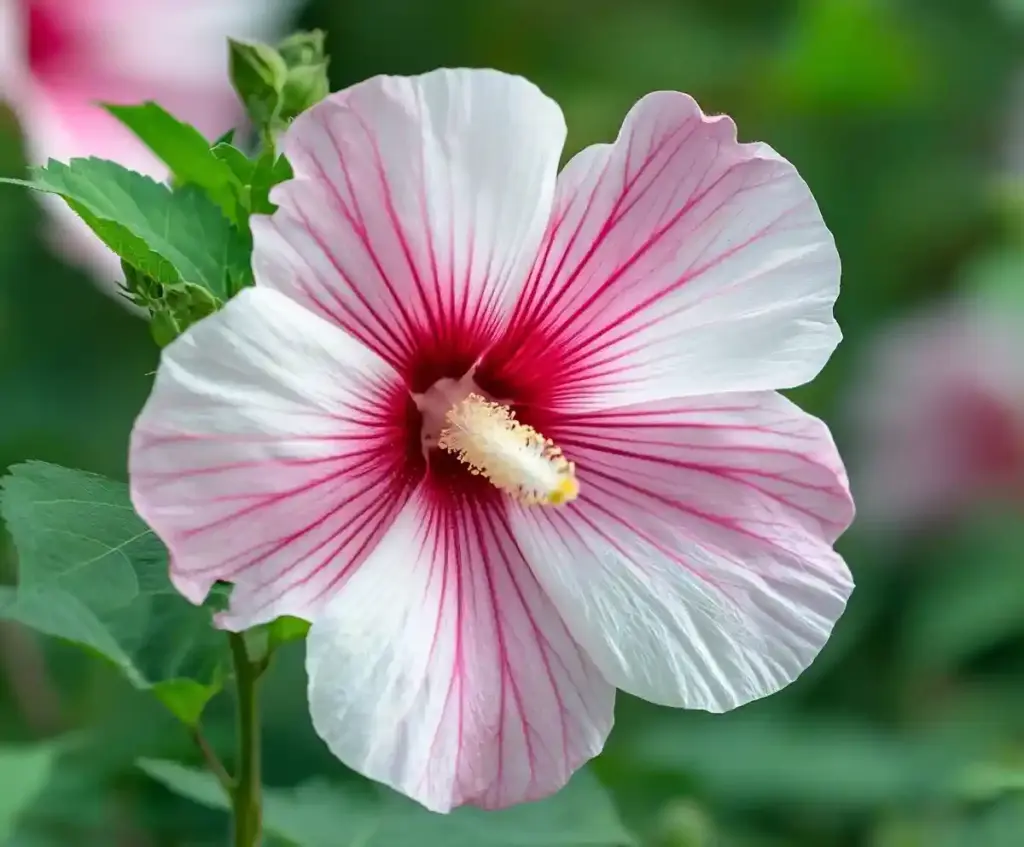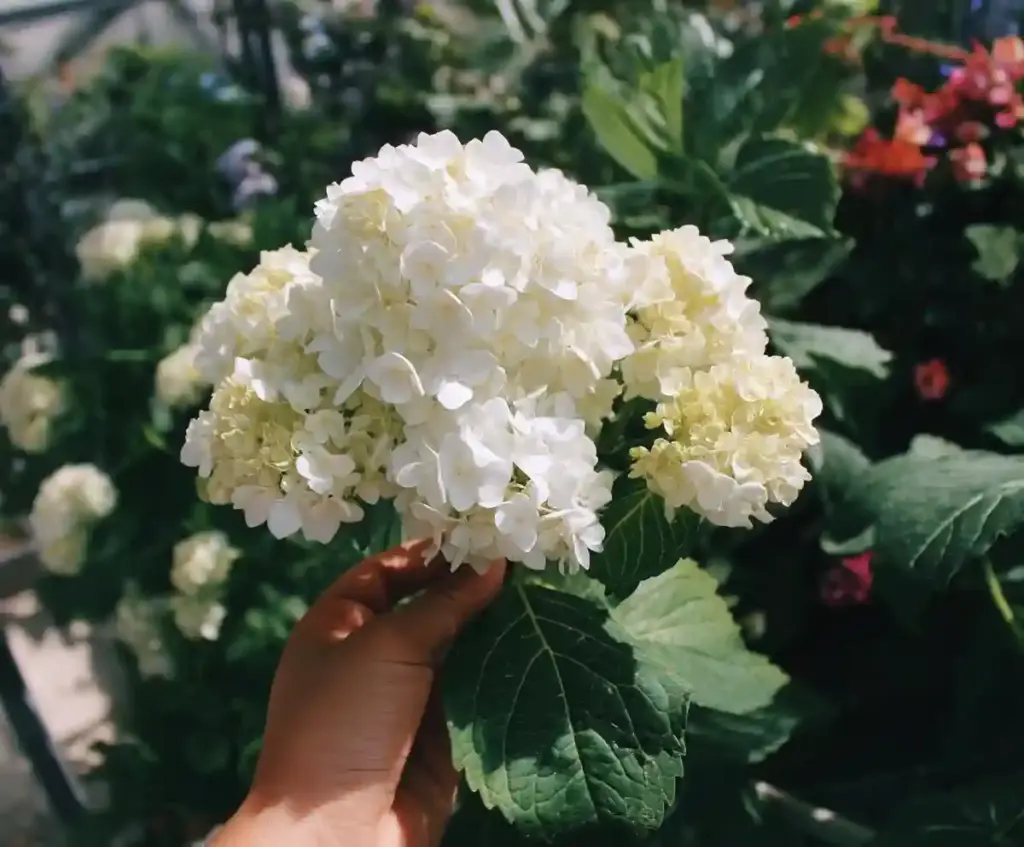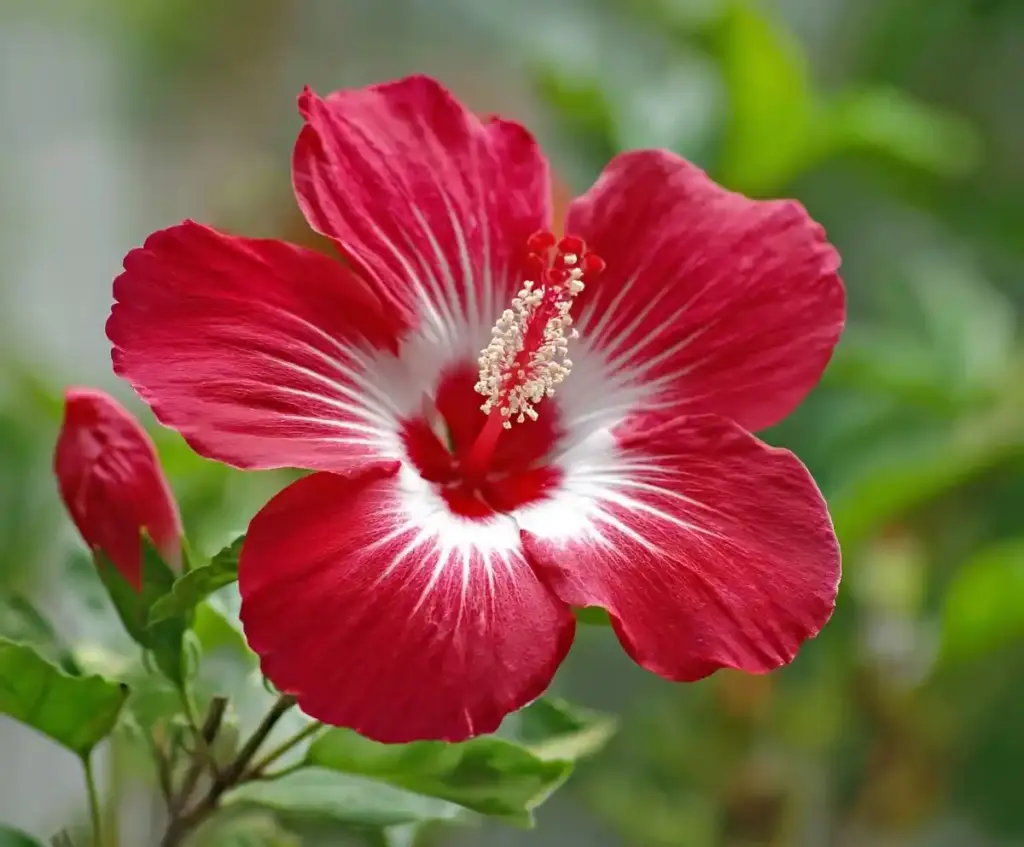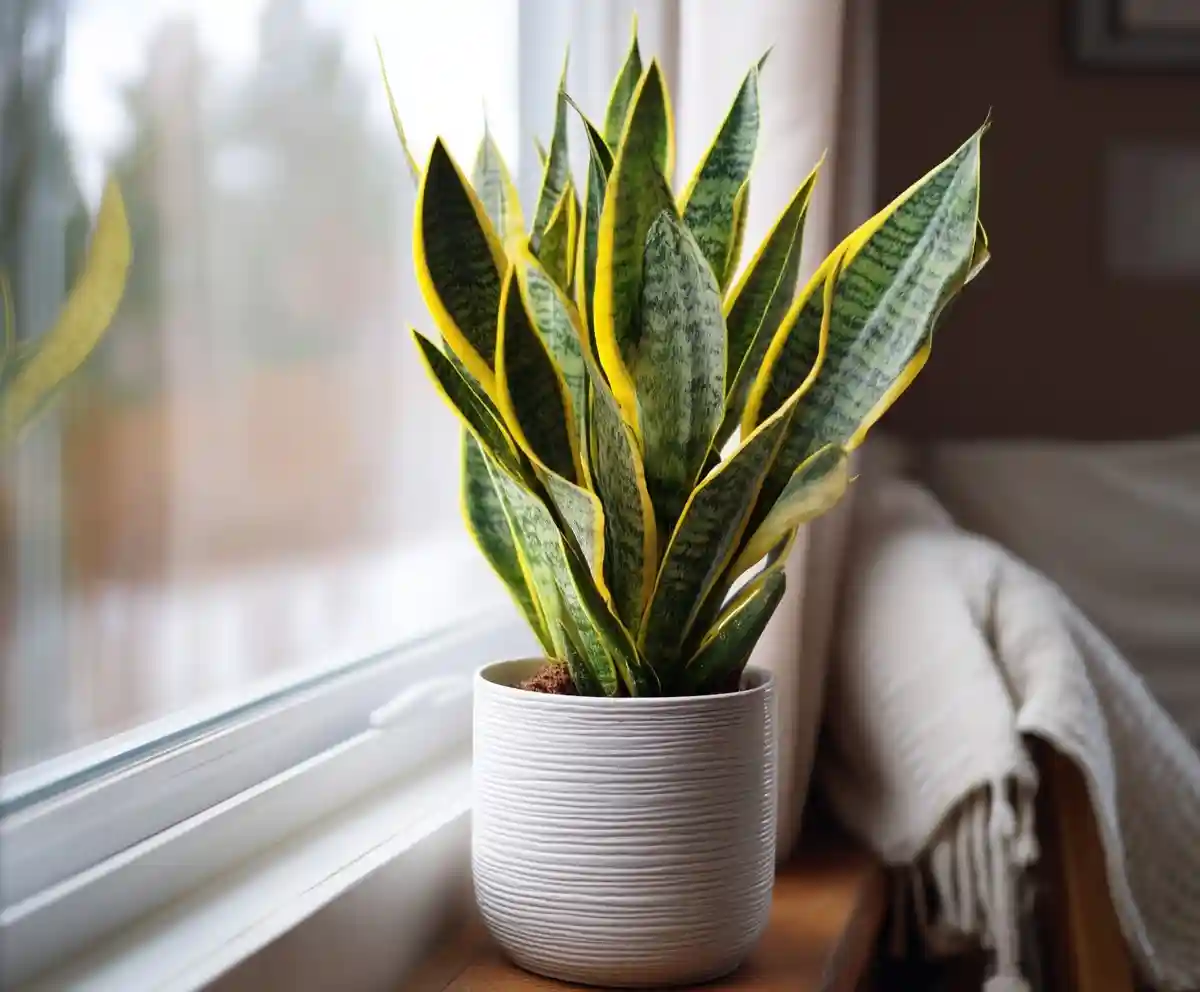Snake plant care blends simplicity with elegance, making it the ideal low‑maintenance houseplant for busy plant lovers. Native to West Africa, Dracaena trifasciata thrives on very little attention—just bright, indirect light, infrequent watering, and well‑draining soil. With sturdy, upright foliage and air‑purifying benefits, this plant not only elevates your indoor décor but also improves air quality.
In this guide, you’ll discover step‑by‑step instructions—from watering and light requirements to soil mix, feeding, propagation, and troubleshooting. I’ll also highlight the most popular cultivars and share tips to help your snake plant thrive for years. The goal is to give you deeper insights than the original article while keeping it easy to read and SEO‑friendly.
Table of Contents
Why Snake Plants Are the Perfect Indoor Companion
Snake plants aren’t just trendy—they’re genuinely one of the most reliable and rewarding plants you can own. Whether you’re a new plant parent or someone who’s been growing greenery for decades, this houseplant adapts effortlessly to most indoor conditions.
Benefits of Growing a Snake Plant
- Air Purification
NASA studies have shown that snake plants help remove toxins like formaldehyde, benzene, and xylene, promoting cleaner indoor air. - Drought Tolerance
These hardy plants store water in their thick leaves, meaning they can go weeks without needing attention. - Low Light Friendly
Snake plants tolerate shady corners and dim rooms better than most houseplants. - Pest Resistant
Rarely troubled by pests or diseases, snake plants are low on maintenance headaches. - Long Lifespan
With minimal care, a healthy snake plant can live for 10–25 years.
Note: Snake plants are mildly toxic to pets if ingested. Keep them out of reach of curious cats or dogs.
Essential Snake Plant Care Guide
A snake plant’s low-maintenance nature doesn’t mean it thrives on total neglect. With just a few adjustments to your home’s environment, you can help this plant grow strong and beautiful for years. Let’s break down the key care requirements.
🌤 Light Requirements
- Best Light: Bright, indirect sunlight is ideal. Think of a spot near an east-facing window with sheer curtains.
- Tolerates: Low-light corners or even fluorescent office lights.
- Avoid: Direct afternoon sunlight—especially in summer—as it can scorch the leaves and cause fading or wrinkling.
Pro Tip: Rotate the pot every few weeks to encourage even growth and prevent the plant from leaning.
💧 Watering: Less Is More
- Frequency: Every 2 to 6 weeks depending on your climate and lighting. In lower light or colder months, water less.
- How: Let the soil dry out fully between waterings. Water deeply until it drains from the bottom of the pot.
- Winter Care: Once every 4–6 weeks may be enough.
Overwatering is the #1 killer of snake plants. Always err on the side of underwatering.
🪴 Soil & Potting
Repotting: Every 3–5 years, or when roots start circling the inside of the pot or break through.
Soil Mix: Use a fast-draining blend—equal parts potting soil and succulent mix with added perlite.
Pot: Terracotta pots are best since they allow moisture to evaporate faster. Ensure your container has drainage holes.
Temperature, Humidity & Fertilizer Tips
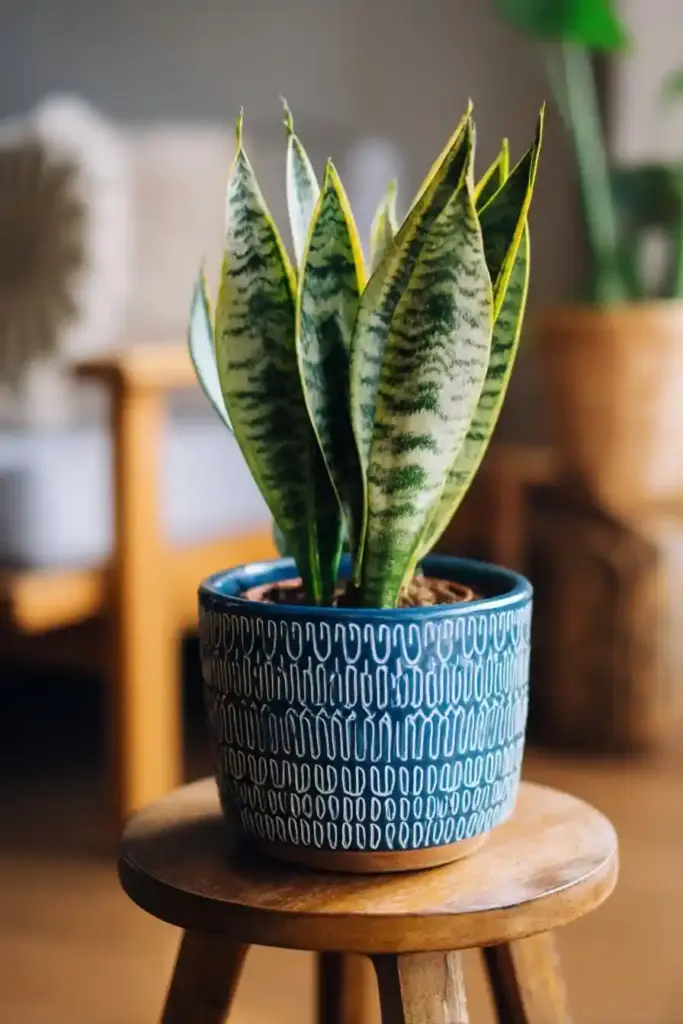
Though snake plants are forgiving, providing the right climate and nutrients will encourage better growth and more vibrant foliage.
🌡️ Temperature
- Ideal Range: 60–85°F (16–29°C)
- Cold Sensitivity: Avoid exposing your snake plant to temperatures below 50°F. Cold drafts or windowsills in winter can damage the leaves.
Snake plants are tropical by nature and prefer stable indoor temperatures.
💨 Humidity
- Best Range: 30–50%, which matches the average home environment.
- Avoid Misting: These plants do not need high humidity. Misting may actually increase the risk of leaf rot.
Instead of misting, gently wipe dust off the leaves with a damp cloth to keep them clean and healthy.
🌱 Fertilizing
- When to Feed: Once every 4–6 weeks during the growing season (spring and summer).
- Type: Use a balanced liquid fertilizer diluted to half strength (e.g., 10-10-10).
- Avoid: Fertilizing in fall and winter or using too much, which may burn the roots or cause floppy growth.
A light feeding goes a long way—snake plants don’t need much to thrive.
Troubleshooting Common Snake Plant Problems

Even though snake plants are tough, they’re not completely invincible. Here are some of the most common issues plant owners face—and how to fix them fast.
🔄 Yellow Leaves
- Cause: Overwatering is the #1 culprit.
- Fix: Allow the soil to dry out completely before watering again. If the roots feel mushy or smell sour, repot the plant in fresh, dry soil.
🌫 Droopy Leaves
- Cause: Prolonged low light or excessive watering.
- Fix: Move your snake plant to a brighter spot and check soil moisture levels. Ensure the pot drains well.
⚠️ Brown Leaf Tips
- Cause: Low humidity, fluoride in tap water, or inconsistent watering.
- Fix: Trim tips with sterile scissors. Water using filtered or rainwater and keep the plant in a room with moderate humidity.
💤 No Growth
- Cause: Low light or root-bound conditions.
- Fix: Place the plant in brighter indirect light. If it hasn’t been repotted in 3–5 years, refresh the soil and give roots room to spread.
Pro Tip: Always inspect for root rot when repotting. Healthy roots should be firm and white.
How to Propagate Snake Plants
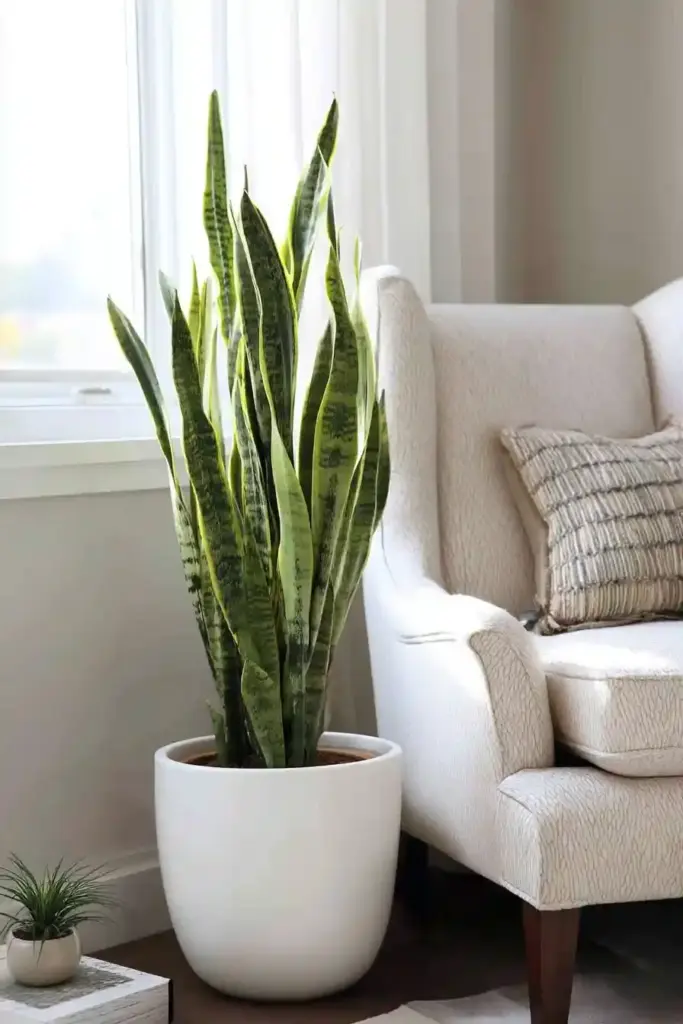
Snake plants are not only beautiful—they’re easy to multiply! Whether you’re expanding your collection or sharing with friends, propagation is simple and rewarding.
✂️ Leaf Cuttings in Soil
- Choose a healthy, mature leaf and cut it near the base.
- Slice the leaf into 3- to 4-inch sections. Mark the “bottom” of each segment so you plant them upright.
- Allow cuttings to dry for 24–48 hours to callous over.
- Plant the cuttings in a well-draining soil mix (just like the mother plant).
- Water lightly and place in bright, indirect light.
- Be patient—roots and new shoots can take 1–3 months to appear.
Note: Variegated varieties may lose their patterns and revert to green when propagated this way.
🌱 Division of Pups (Offsets)
- Gently remove the snake plant from its pot.
- Locate the small baby plants, or “pups,” growing beside the main root ball.
- Use a clean, sharp knife to separate the pup, ensuring it has roots attached.
- Replant each section in a new pot with fresh soil.
- Water sparingly for the first few weeks to avoid rot.
Division is the easiest and most reliable way to maintain variegated patterns.
Popular Snake Plant Varieties Worth Growing
There are more than 70 recognized species and cultivars of snake plants, each with unique patterns, sizes, and leaf shapes. Here are a few favorites to look for at garden centers or online:
🌙 ‘Moonshine’
- Appearance: Silvery-green, upright leaves with a matte finish.
- Height: 2–3 feet.
- Vibe: Sleek and modern—pairs well with minimalist décor.
🌀 ‘Twisted Sister’
- Appearance: Compact plant with curling yellow and green leaves.
- Height: 6–12 inches.
- Vibe: Fun and quirky, great for tabletops or shelves.
🪨 ‘Black Coral’
- Appearance: Deep green leaves with lighter horizontal stripes.
- Height: Up to 3 feet.
- Vibe: Bold and dramatic; excellent for contrast in bright rooms.
🗻 ‘Cylindrica’
- Appearance: Cylindrical, spear-shaped leaves often braided or fanned.
- Height: 3–5 feet.
- Vibe: Sculptural and architectural—a true conversation starter.
🌼 ‘Golden Hahnii’
- Appearance: Rosette form with golden-yellow leaf edges.
- Height: 6–8 inches.
- Vibe: Compact and colorful—perfect for desks or small spaces.
Tip: When shopping, look for healthy leaves, strong roots, and signs of new growth for the best start.
Pro Tips for Thriving Snake Plants
Snake plants are naturally tough, but a few simple habits can keep them looking their best year-round.
🧼 Keep the Leaves Clean
- Dust can block sunlight and reduce photosynthesis.
- Wipe leaves gently with a damp cloth every few weeks to keep them shiny and healthy.
🔄 Rotate Regularly
- Snake plants tend to grow toward light.
- Turn the pot every 2–3 weeks for even, upright growth.
🧊 Avoid Overwatering in Winter
- Water sparingly when light and temperatures drop.
- Overwatering during dormancy is the leading cause of root rot.
🪴 Skip Pebble Trays
- Snake plants don’t require added humidity.
- Instead, focus on airflow and proper drainage.
🌿 Don’t Panic Over Slow Growth
- Snake plants grow slowly, especially in low light or during winter.
- Patience is key—new leaves take time to develop.
Bonus Tip: If your snake plant blooms (a rare event indoors), enjoy it! The small white flowers are fragrant and a sign of a happy plant.
Final Thoughts
Snake plants prove that plant care doesn’t have to be complicated. With their striking foliage, incredible resilience, and air-purifying abilities, they’re one of the most rewarding houseplants you can own. Whether you’re placing one on a sunny windowsill or tucking it into a low-light corner, this adaptable plant will likely forgive occasional neglect while continuing to look fresh and stylish.
So if you’re looking for a virtually indestructible, pet-moderately-safe, and aesthetically pleasing indoor companion—the snake plant is your go-to green buddy.
🌿 Love gardening inspiration? Follow me on Pinterest for bold plant ideas, tips, and seasonal color!
More Posts
